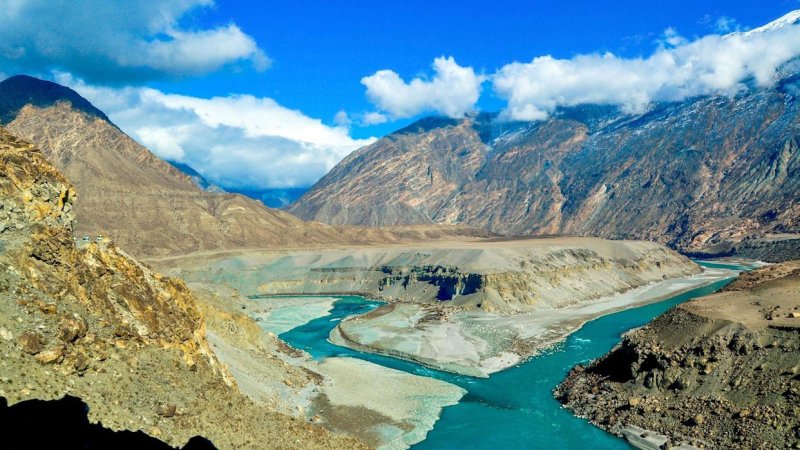
Can India really stop river water from flowing into Pakistan?

The 1960 Indus Waters Treaty (IWT) survived two wars between the nuclear rivals and was seen as an example of trans-boundary water management, BBC reporterd.
The suspension is among several steps India has taken against Pakistan, accusing it of backing cross-border terrorism - a charge Islamabad flatly denies. It has also hit back with reciprocal measures against Delhi, and said stopping water flow "will be considered as an Act of War".
The treaty allocated the three eastern rivers – the Ravi, Beas and Sutlej – of the Indus basin to India, while 80% of the three western ones – the Indus, Jhelum and Chenab – to Pakistan.
Disputes have flared in the past, with Pakistan objecting to some of India's hydropower and water infrastructure projects, arguing they would reduce river flows and violate the treaty. (More than 80% of Pakistan's agriculture and around a third of its hydropower depend on the Indus basin's water.)
India, meanwhile, has been pushing to review and modify the treaty, citing changing needs - from irrigation and drinking water to hydropower - in light of factors like climate change.
Over the years, Pakistan and India have pursued competing legal avenues under the treaty brokered by the World Bank.
But this is the first time either side has announced a suspension - and notably, it's the upstream country, India, giving it a geographic advantage.
But what does the suspension really mean? Could India hold back or divert the Indus basin's waters, depriving Pakistan of its lifeline? And is it even capable of doing so?
Experts say it's nearly impossible for India to hold back tens of billions of cubic metres of water from the western rivers during high-flow periods. It lacks both the massive storage infrastructure and the extensive canals needed to divert such volumes.
"The infrastructure India has are mostly run-of-the-river hydropower plants that do not need massive storage," said Himanshu Thakkar, a regional water resources expert with the South Asia Network on Dams, Rivers and People.
Such hydropower plants use the force of running water to spin turbines and generate electricity, without holding back large volumes of water.
Indian experts say inadequate infrastructure has kept India from fully utilising even its 20% share of the Jhelum, Chenab and Indus waters under the treaty - a key reason they argue for building storage structures, which Pakistan opposes citing treaty provisions.
Experts say India can now modify existing infrastructure or build new ones to hold back or divert more water without informing Pakistan.
"Unlike in the past, India will now not be required to share its project documents with Pakistan," said Mr Thakkar.


